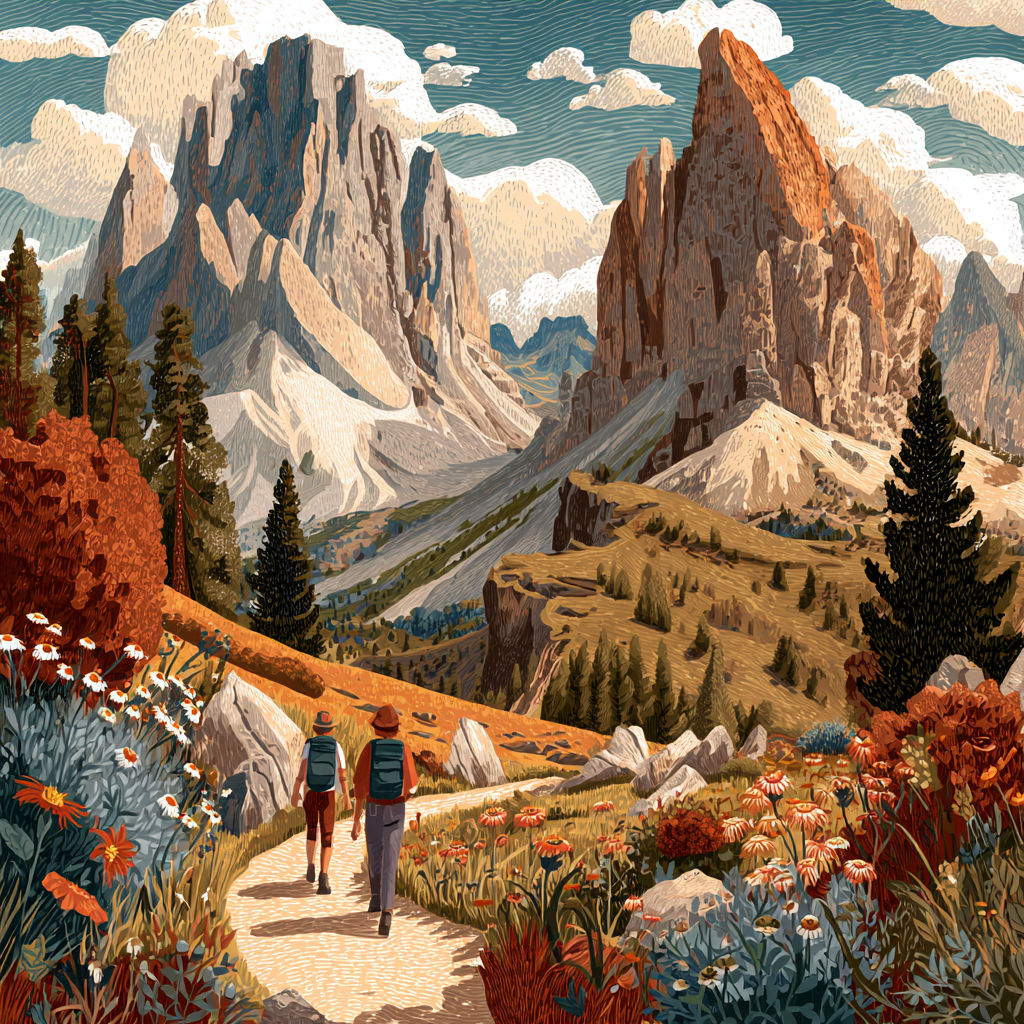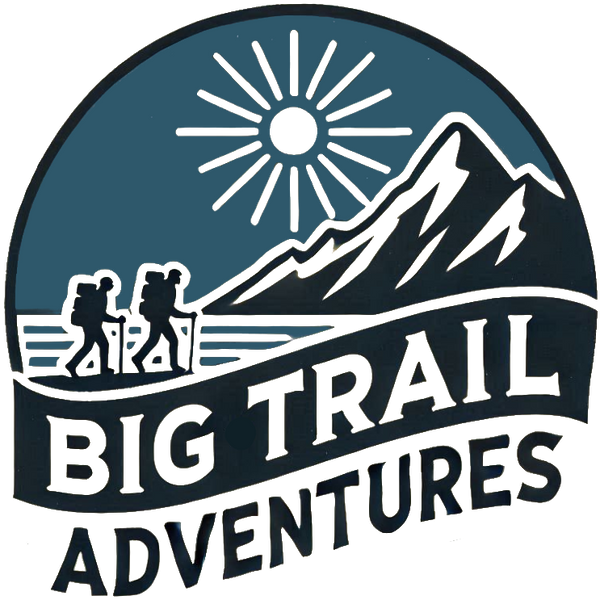
Alta Via 1 with Marijke — long days, big smiles, and a lot of grappa
Share
Today we’re off to northern Italy and the Alta Via 1 — a 120 km trail through the dramatic limestone peaks of the Dolomites. It’s steep, it’s challenging, and it’s one of Europe’s classic routes. My guest is Marijke, joining me from Montana.
She jumped at the chance to hike the Alta Via 1 with her best friend: long days, plenty of laughter, and a fair bit of grappa along the way. The audio on this episode is more phone-call than studio-quality, but I really wanted to share this conversation.
Two years ago, Marijke was diagnosed with cancer. Now well into her recovery, she reflects on how adventures like this aren’t just about the miles; they’re about grabbing opportunities, sharing them with people you love, and that feeling of being privileged to be out there at all. We don’t talk directly about her illness, but you can hear how much that experience has shaped her outlook.
What is the Alta Via 1?
“The Alta Via 1 is one of the best and most demanding trails I’ve ever done — and I’m a seasoned hiker. I’d describe it as up, down, up, down with very little flat.”
From Montana to the Dolomites — what’s the story?
“My best friend Claire (who has family in Italy) was flying over for a wedding. I asked if I could tag along. She said, ‘Not the wedding — but come hike this trail with me.’ Everyone in my life said, ‘You’ve got to go.’ She booked the huts, I bought a plane ticket, and off we went.”
Logistics and booking huts
“It’s not straightforward. Claire speaks Italian, bought an Alta Via 1 guidebook that breaks it into 12 stages, but we only had 6–7 days. She booked what she could — which meant big days because of hut availability. The trail was busy, and we learned a lot of people book through guide companies.”
Hut experience:
“The huts were lovely. We had a couple of private rooms, which helped with jet lag (I’m 8 hours behind northern Italy). In the dorms we always ended up on the top bunks because we arrived late. Earplugs are a must! Dinner is set — no choosing — which I loved after a long day. And yes, beer, wine, and plenty of grappa.”
Food:
“Northern sections felt more Austrian/South Tyrolean (breakfasts, meat-and-potatoes dinners). Further south felt more Italian — pasta first, then a meat course, then dessert. We ate everything to replace the calories. It’s a big, steep trail.”
How the Dolomites feel (versus Montana)
“Montana trails are often dirt and you can zone out. In the Dolomites you’re constantly switching between scree, boulders, roots, and narrow paths. You have to focus every step. It’s steep and often exposed — big drops right beside the trail. Stunning, but you’re switched on all day.”
A typical day
“Breakfast at the hut is usually 7:00 a.m. Then pack up and go. We joked, took in the views, told stories — it helps on the tough days. Early on we made the mistake of a long sit-down lunch (beer + pasta) before three passes and 2,000 m of ascent — that day ran to 12 hours. After that we grabbed a quick sandwich at midday and aimed to reach the hut by about 6:30 p.m. Quick shower, 7:00 p.m. dinner, then bed… or trying to sleep while jet lag said otherwise.”
The hardest moment
“On day two we dropped a steep cliff path to a lake, then looked across to an even higher pass with the trail zigzagging up. It felt huge. We were tired, under-fuelled (I hadn’t packed my usual electrolytes or sweets), and we still had a big descent to the hut. We rolled in around 8:15 p.m. — thankfully they kept our dinner!”
Packing — what worked (and what didn’t)
MVP items:
-
Dry hut clothes (fresh trousers, shirt, warm layer) — it was hot, so changing out of sweaty kit felt amazing.
-
Rain shell, rain trousers, gloves, hat — didn’t need them, but in the mountains you just bring them.
-
Small first-aid kit (unused, but essential).
-
Kindle for hut evenings.
Could have skipped:
-
Heavy power bank — every hut had electricity.
-
Journal — no time or energy to write.
Water:
“I like carrying extra water — I’ve seen too many people get dehydrated — so I carried up to 2.5 litres. You hit huts often, but I’d rather be safe. I also carried a filter for the longer gaps.”
Busy or quiet?
“Both. Near towns and lifts — like the climb to Col dei… the top of a ski area — it was packed (we think you meant Col dei Rossi/resort top). On weekends it can feel like a procession. But move away from access points and it thins out. I’m used to Montana where you can hike all weekend and see no one — the AV1 is popular in comparison.”
Moments that stopped you in your tracks
“The scenery is unlike anywhere I’ve been — huge, vertical, cathedral-like walls. You also pass World War I sites, where Austria and Italy faced each other. Imagining soldiers hauling supplies up those slopes is humbling.
“Honestly, my mind was often blank — in a good way. The terrain demands attention, so there’s no room for life admin. It’s a relief to think about nothing except the next step.”
Footnotes from the trail
-
Exposure: “Some sections were so exposed I thought, ‘I’m never doing this again.’ Back home, flicking through photos, I’m already planning a return.”
-
Weather call: “We left the trail ~15 km early due to rain forecast — steep, slick rock and exposure don’t mix. Another reason to go back.”
-
One place to teleport back to: “After Rifugio Averau, we climbed steeply and then wandered through a meadow like something out of Lord of the Rings. We lay back, ate sandwiches, and put our feet up. Take me there.”
Practical advice if you’re planning the Alta Via 1
-
Book huts early. As soon as reservations open.
-
Cluster huts closer unless you’re very fit — big gaps = very big days.
-
Arrive a couple of days early to beat jet lag before you start.
-
Don’t overpack. Pack just enough; you’ll be happier on the climbs.
-
Bring electrolytes and quick sugars if you’re pushing long days.
-
Expect busy sections near lifts/towns — they pass.
What the trail gives back
“What stayed with me wasn’t only the steep trails and long days, but a sense of joy and gratitude after a tough couple of years. Being able to take on adventures like this feels like a privilege.”
